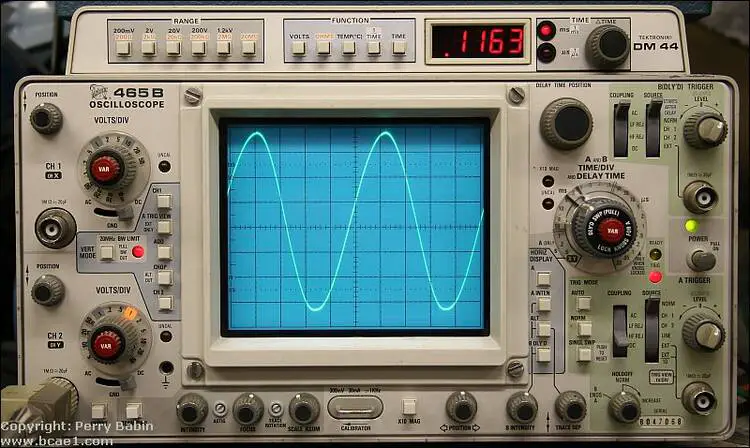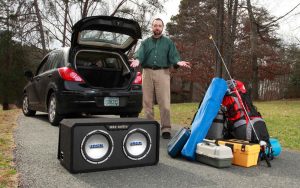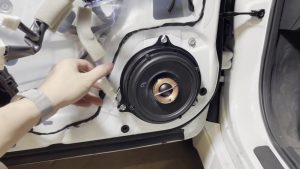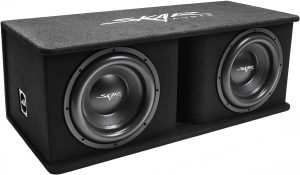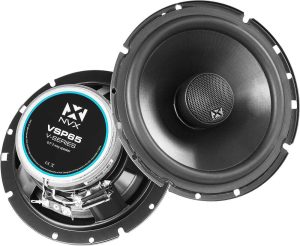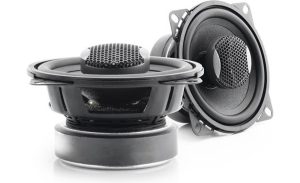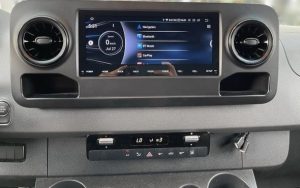Car audio enthusiasts know the struggle of chasing perfect sound. A thumping bass, crisp highs, and balanced mids can transform your driving experience. But distorted signals, clipping, or electrical noise can ruin the vibe. That’s where an oscilloscope comes in. These handy tools let you visualize audio signals, diagnose issues, and fine-tune your system like a pro. Whether you’re setting gains, checking for clipping, or troubleshooting a pesky hum, an oscilloscope is your best friend.
In this roundup, I dive into the top five oscilloscopes for car audio in 2025. Each model offers unique features, from portable designs to multifunction capabilities, tailored for automotive audio tweaking. I’ve tested these devices for ease of use, accuracy, and value, ensuring you find the perfect fit for your setup. Let’s explore these tools and help you achieve audio nirvana on the road.
Contents
Why Use an Oscilloscope for Car Audio?
Before jumping into the reviews, let’s talk about why oscilloscopes matter for car audio. Unlike a multimeter, which gives you a snapshot of voltage or current, an oscilloscope shows how signals change over time. This visual representation helps you spot issues like:
- Clipping: When your amplifier pushes beyond its limits, distorting sound.
- Noise interference: Hum or buzz from poor grounding or faulty wiring.
- Signal integrity: Ensuring your head unit, amp, and speakers work in harmony.
- Gain setting: Optimizing amplifier gains for clean, powerful output.
For car audio, handheld oscilloscopes are ideal. They’re portable, rugged, and often combine multimeter or signal generator functions, making them versatile for on-the-go diagnostics. Now, let’s get to the good stuff—the best oscilloscopes for your car audio needs.
Our Top 5 Oscilloscopes for Car Audio
1. 2.4″ TFT Handheld Digital Oscilloscope Kit
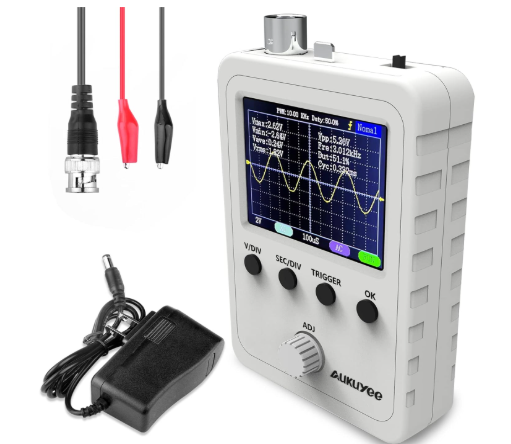
Best For: Budget-conscious DIYers and beginners
Kicking off our list is the 2.4″ TFT Handheld Digital Oscilloscope Kit, a pocket-sized gem for those dipping their toes into car audio diagnostics. Don’t let the low price fool you—this compact device packs enough punch for basic audio troubleshooting.
Key Features
- 2.4-inch TFT display: Small but clear for viewing waveforms.
- 200 kHz bandwidth: Suitable for low-frequency audio signals.
- 2.5 MS/s sampling rate: Captures basic waveforms with decent accuracy.
- Multimeter mode: Measures voltage, resistance, and continuity.
- BNC-clip cable probe: Easy to connect to car audio circuits.
- 9V battery clip: Portable power for fieldwork.
Performance
This oscilloscope shines for simple tasks like checking for clipping or verifying signal presence. Its 200 kHz bandwidth handles most car audio frequencies, which typically range from 20 Hz to 20 kHz. The 2.4-inch screen displays waveforms clearly, though it’s not ideal for complex analysis due to its single-channel design. The multimeter function is a nice bonus, letting you measure DC voltage across your amp or test speaker continuity.
Pros
- Ultra-affordable, perfect for beginners.
- Lightweight and portable for tight car spaces.
- Easy-to-use interface with minimal learning curve.
- Includes probes and battery clip for immediate use.
Cons
- Single-channel limits simultaneous signal comparison.
- Low bandwidth not suited for advanced diagnostics.
- Small screen can feel cramped for detailed work.
Best Use Case
If you’re a DIYer tweaking a basic car audio setup, this oscilloscope gets the job done. Use it to set amplifier gains or spot distortion in a subwoofer signal. Its simplicity and low cost make it a great starter tool, but serious audiophiles may want more power.
2. 3 in 1 Handheld Oscilloscope Automotive Dual Channel 50MHz
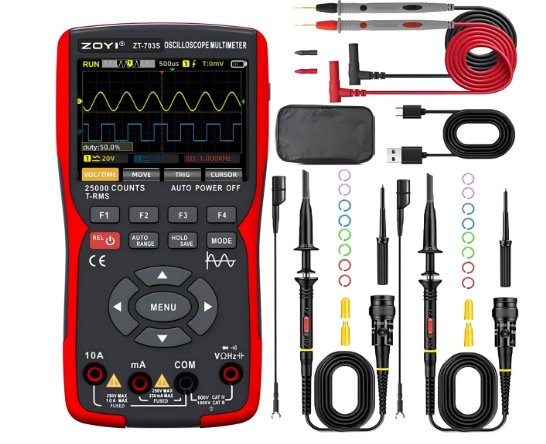
Best For: Versatile diagnostics with pro-level features
Next up is the 3 in 1 Handheld Oscilloscope, a powerhouse that combines oscilloscope, multimeter, and signal generator functions. With a 50 MHz bandwidth and dual-channel design, it’s a step up for car audio enthusiasts craving precision.
Key Features
- 50 MHz bandwidth: Captures high-frequency signals with ease.
- 250 MS/s sampling rate: Delivers accurate waveform details.
- Dual-channel input: Compare two signals simultaneously.
- 3.5-inch color display: Bright and readable in any light.
- Multimeter functions: Measures voltage, current, and capacitance.
- Signal generator: Outputs test tones for circuit testing.
Performance
This device excels in car audio diagnostics. The 50 MHz bandwidth is overkill for most audio signals, ensuring you capture every nuance. Dual channels let you compare, say, the input and output of an amplifier, spotting distortion instantly. The signal generator is a standout, allowing you to inject test tones to verify speaker response or tune crossovers. Its sturdy build handles the rough-and-tumble of automotive work.
Pros
- High bandwidth and sampling rate for precise measurements.
- Dual channels enhance troubleshooting efficiency.
- Signal generator adds versatility for testing.
- Clear, vibrant display for easy waveform reading.
Cons
- Higher price point than entry-level models.
- Slightly bulky for very tight spaces.
- Battery life (5–6 hours) could be better.
Best Use Case
This oscilloscope suits enthusiasts upgrading complex systems with multiple amps or crossovers. Use it to diagnose noise issues, set precise gains, or test signal paths. Its multifunction design makes it a go-to for both car audio and general automotive repairs.
3. FNIRSI DSO-510 Handheld Oscilloscope/DDS Signal Generator
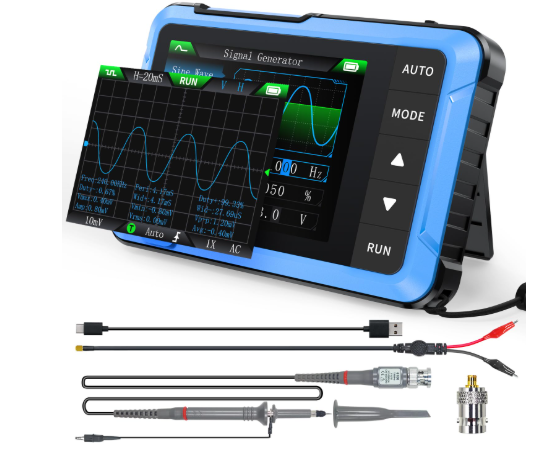
Best For: Balanced performance on a mid-range budget
The FNIRSI DSO-510 is a solid middle-ground option, blending portability with advanced features. Its 10 MHz bandwidth and 48 MS/s sampling rate make it a reliable choice for car audio tweaking without breaking the bank.
Key Features
- 10 MHz bandwidth: Covers car audio frequencies comfortably.
- 48 MS/s sampling rate: Smooth waveform capture.
- 2.8-inch TFT display: Compact yet clear for fieldwork.
- Signal generator: Outputs basic waveforms for testing.
- Trigger functions: Auto, normal, and single modes for flexibility.
- Rechargeable battery: Long-lasting for extended use.
Performance
The DSO-510 performs admirably for car audio tasks. Its 10 MHz bandwidth handles audio signals with room to spare, while the 48 MS/s sampling rate ensures accurate waveform rendering. The signal generator is handy for testing speaker response or checking amp performance with sine waves. The 2.8-inch screen is bright, though its resolution isn’t as sharp as pricier models. Trigger functions make it easy to lock onto repetitive signals like PWM or servo pulses.
Pros
- Affordable yet feature-rich for mid-range users.
- Signal generator enhances testing capabilities.
- Lightweight and durable for on-the-go use.
- Intuitive interface speeds up diagnostics.
Cons
- Limited to single-channel measurements.
- Screen resolution could be higher.
- Signal generator lacks advanced waveform options.
Best Use Case
This oscilloscope is perfect for hobbyists or semi-pros working on moderately complex setups. Use it to troubleshoot ground loops, set subwoofer gains, or verify signal integrity. Its portability and signal generator make it a versatile tool for car audio and beyond.
4. FNIRSI 2C53T Upgraded Handheld Oscilloscope
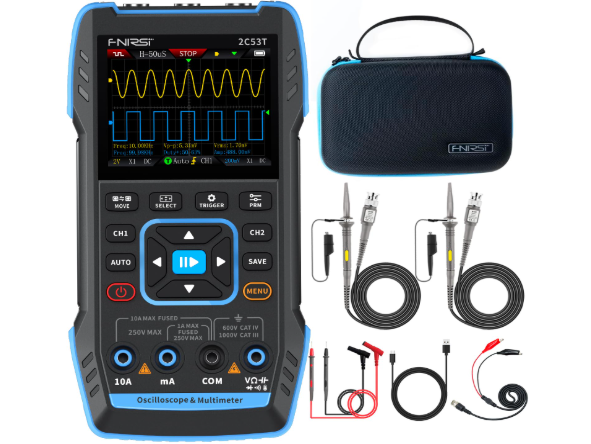
Best For: Professionals needing multifunction precision
The FNIRSI 2C53T takes things up a notch with its 3-in-1 design and high-performance specs. Boasting a 50 MHz bandwidth and 250 MS/s sampling rate, it’s built for serious car audio diagnostics.
Key Features
- 50 MHz bandwidth: Captures detailed audio signals.
- 250 MS/s sampling rate: High accuracy for fast-changing signals.
- Dual-channel design: Simultaneous signal comparison.
- 4.3-inch touchscreen: Large, responsive display.
- Multimeter capabilities: Measures up to 19,999 counts for voltage, current, and more.
- DDS signal generator: Outputs multiple waveform types.
Performance
The 2C53T is a beast for car audio work. Its dual channels let you monitor amplifier input and output side-by-side, making it easy to spot clipping or phase issues. The 50 MHz bandwidth and 250 MS/s sampling rate deliver crystal-clear waveforms, even for complex signals. The touchscreen is a game-changer, offering intuitive navigation and quick adjustments. The multimeter’s high count ensures precise measurements, while the signal generator supports advanced testing with waveforms like sine, square, and triangle.
Pros
- High bandwidth and sampling rate for pro-level accuracy.
- Touchscreen display simplifies operation.
- Robust multimeter and signal generator functions.
- Durable build withstands automotive environments.
Cons
- Pricey compared to basic models.
- Touchscreen can be glitchy with gloves.
- Slightly heavier than other handheld options.
Best Use Case
This oscilloscope is ideal for professional installers or enthusiasts with high-end systems. Use it to fine-tune multi-amp setups, diagnose CAN bus signals, or test speaker crossovers. Its all-in-one design saves time and toolbox space.
5. FNIRSI 3 in 1 Oscilloscope/Multimeter/DDS Signal Generator
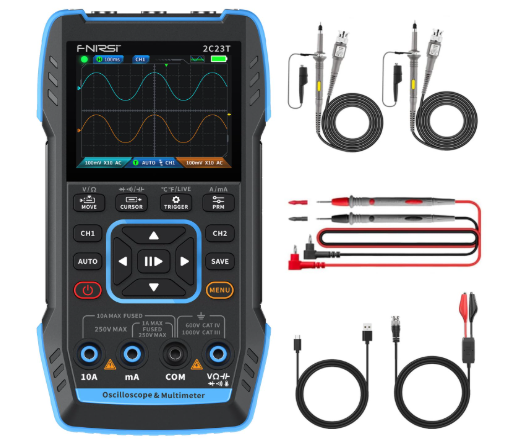
Best For: Value-driven versatility for serious hobbyists
Rounding out our list is the FNIRSI 3 in 1 Oscilloscope with upgraded 2*P6100 probes. With a 10 MHz bandwidth and multifunction capabilities, it’s a budget-friendly alternative to the 2C53T.
Key Features
- 10 MHz bandwidth: Sufficient for car audio diagnostics.
- 50 MS/s sampling rate: Reliable for most audio signals.
- Dual-channel input: Compare two signals at once.
- 2.8-inch color display: Clear and functional.
- Multimeter functions: Up to 10,000 counts for precise measurements.
- DDS signal generator: Supports multiple waveforms.
Performance
This FNIRSI model delivers solid performance for car audio enthusiasts. The 10 MHz bandwidth covers audio frequencies, while the 50 MS/s sampling rate ensures decent waveform clarity. Dual channels allow simultaneous monitoring of, say, pre-amp and post-amp signals. The upgraded probes improve signal fidelity, and the signal generator is great for testing amp response or speaker alignment. The 2.8-inch screen is adequate but less impressive than larger displays.
Pros
- Affordable dual-channel oscilloscope with extras.
- Upgraded probes enhance measurement accuracy.
- Signal generator supports diverse testing needs.
- Compact and easy to use in tight spaces.
Cons
- Lower bandwidth than premium models.
- Screen size limits detailed waveform analysis.
- Battery life (4–5 hours) is average.
Best Use Case
This oscilloscope suits hobbyists or small shop owners tackling advanced car audio projects. Use it to diagnose noise issues, set gains, or test signal paths in systems with multiple components. Its value-packed features make it a smart pick for the price.
How to Choose the Right Oscilloscope for Car Audio
Picking the perfect oscilloscope depends on your needs, budget, and expertise. Here are key factors to consider:
Bandwidth
Bandwidth determines the range of frequencies an oscilloscope can measure. Car audio signals typically fall between 20 Hz and 20 kHz, so a 10 MHz bandwidth is plenty. Higher bandwidths (e.g., 50 MHz) offer future-proofing for advanced diagnostics.
Sampling Rate
The sampling rate affects how accurately the oscilloscope captures waveforms. For car audio, 48 MS/s or higher ensures smooth, detailed traces. Faster rates like 250 MS/s are ideal for complex signals.
Channels
Single-channel oscilloscopes are fine for basic tasks, but dual-channel models let you compare signals (e.g., amp input vs. output). This saves time and improves diagnostics.
Display
A clear, bright display is crucial for reading waveforms in a car’s cramped, dimly lit spaces. Larger screens (3.5–4.3 inches) with touch functionality enhance usability.
Extra Features
Many oscilloscopes double as multimeters or signal generators. Multimeter modes measure voltage, resistance, or capacitance, while signal generators output test tones for troubleshooting. These extras add versatility, especially for automotive work.
Portability
Handheld oscilloscopes are best for car audio due to their compact size and battery power. Look for rugged designs that withstand dust, drops, and vibrations.
Budget
Entry-level models ($30–$80) suit beginners, while mid-range ($80–$150) and premium ($150–$200) options cater to hobbyists and pros. Balance features with affordability.
How to Use an Oscilloscope for Car Audio
Using an oscilloscope might seem daunting, but it’s straightforward with practice. Here’s a quick guide:
- Connect the Probe: Attach the oscilloscope probe to the signal source, like the amplifier’s output or head unit’s RCA cables. Use the ground clip to connect to a clean ground point.
- Set the Parameters: Adjust the time base (horizontal axis) to capture audio frequencies (e.g., 1 ms/div). Set the voltage scale (vertical axis) to match the signal’s amplitude (e.g., 1 V/div).
- Trigger the Signal: Use the trigger function to stabilize the waveform. Auto or normal modes work well for repetitive audio signals.
- Analyze the Waveform: Look for clean sine waves when testing with a tone (e.g., 60 Hz for bass). Clipping appears as flattened peaks, while noise shows as erratic spikes.
- Adjust Your System: Use the oscilloscope to set amplifier gains, ensuring no clipping occurs at maximum volume. Test for noise by probing different points in the signal chain.
- Use the Signal Generator: If available, output test tones (e.g., sine or square waves) to verify speaker or amp performance.
For detailed tutorials, check YouTube channels like MechanicMindset or ScannerDanner, which offer practical oscilloscope tips for automotive use.
Benefits of Using an Oscilloscope in Car Audio
Investing in an oscilloscope pays off in several ways:
- Precision Tuning: Set gains and crossovers accurately for optimal sound quality.
- Fast Troubleshooting: Pinpoint noise, clipping, or signal issues quickly.
- Cost Savings: Avoid costly repairs by diagnosing problems early.
- Professional Results: Achieve studio-quality sound in your car.
- Versatility: Use the oscilloscope for other automotive or electronic projects.
FAQs About Oscilloscopes for Car Audio
Do I need an oscilloscope for car audio?
While not mandatory, an oscilloscope makes tuning and troubleshooting easier and more precise. It’s especially useful for complex systems or when chasing elusive issues like noise.
Can I use a multimeter instead?
A multimeter measures static values like voltage or resistance but can’t show signal changes over time. An oscilloscope’s waveform display is better for diagnosing audio issues.
What bandwidth is enough for car audio?
A 10 MHz bandwidth covers car audio frequencies (20 Hz–20 kHz) with room to spare. Higher bandwidths (50 MHz) are better for advanced diagnostics.
Are handheld oscilloscopes reliable?
Yes, modern handheld oscilloscopes are rugged, accurate, and portable, making them ideal for automotive use. Look for reputable brands like FNIRSI or Hantek.
How do I learn to use an oscilloscope?
Start with simple tasks like checking for clipping. Watch online tutorials, practice with test tones, and experiment with your car audio system to build confidence.
Conclusion
A quality oscilloscope transforms your car audio experience, delivering clean, powerful sound through precise diagnostics. From the budget-friendly 2.4″ TFT Handheld Kit to the feature-packed FNIRSI 2C53T, our top five picks cater to every skill level and budget. For beginners, the 2.4″ TFT Kit offers simplicity and value. Hobbyists will love the FNIRSI DSO-510’s balance of features and affordability. Professionals should opt for the 3 in 1 50MHz or FNIRSI 2C53T for pro-level precision.
No matter your choice, an oscilloscope empowers you to tune your system like a pro, banish distortion, and enjoy music the way it’s meant to be heard. Ready to take your car audio to the next level? Grab one of these oscilloscopes and start tweaking today.
Note: Prices are approximate and may vary based on retailers like Amazon or AliExpress. Always check specifications and reviews before purchasing.
